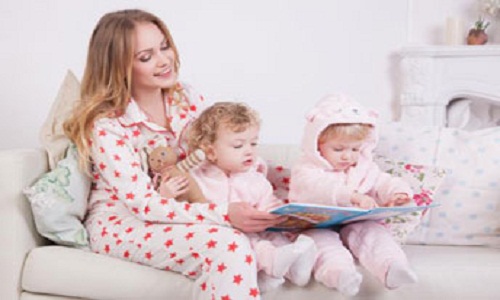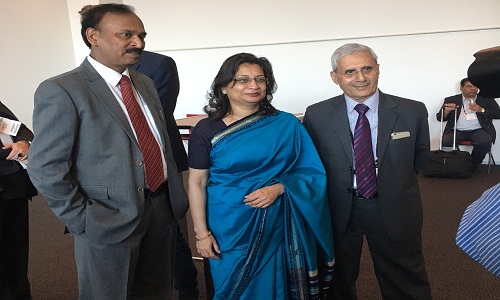FW
The fashion industry revolves around glamorous apparel, celebrities and dazzling runway shows. But it also has a dark side framed by human trafficking, low wages and factories that pollute the environment. While approximately 80 per cent of the world’s garment workers are women, the number of women heading the 15 largest mass-market apparel companies on the Fortune 500 list is zero.
In countries like Bangladesh garment-related global supply chains provide critical jobs and capital that help women workers raise their standard of living and provide for their families. However, these women are also vulnerable in global value chains. Low wages, unsafe working conditions and flexible contracts are prevalent. This is exacerbated by entrenched gender discrimination in everyday life.
In 2014, Cambodia's security forces opened fire on garment workers while they were protesting low pay. It is one in a string of tragedies worldwide that have hit garment workers hard. The broken fashion supply chain system makes trillions in revenue for major brands while paying the workers pennies.
Labor intensive industries, like fashion, are more sensitive to the costs of labor. The race between brands to compete for the lowest costs has driven garment worker wages to the floor.
The rising cost of textile manufacturing is human dignity and human life. They are not measured in profit and loss statements, but the losses are devastating on many levels.
"The International Sourcing Expo (ISEA) opened its doors at the Melbourne Convention & Exhibition Centre from November 15 to 17, 2016. The expo offers an extensive array of apparel, textiles, accessories and footwear and is supposed to be the ultimate destination for sourcing, connecting and learning. The three day show kicked off on a strong note."

The International Sourcing Expo (ISEA) opened its doors at the Melbourne Convention & Exhibition Centre from November 15 to 17, 2016. The expo offers an extensive array of apparel, textiles, accessories and footwear and is supposed to be the ultimate destination for sourcing, connecting and learning. The three day show kicked off on a strong note.
What’s more, this time, India has sent the largest contingent and the product basket is vast with garments, fashion accessories, handlooms, industrial products, children’s organic garments and so on. The strong pan-India participation includes prominent names like Raymond and BSL Suiting's. The Indian pavilion was inaugurated by Rakesh Malhotra, Consul-Consulate Genreral of India in along with Ajay Sahai, DG & CEO, FIEO and Naval Baveja, Director FIEO a strong business partner to ISEA through the years. In fact, many of the Indian exhibitors at the expo already have a presence in Australia as they are exporting there. Indian apparel and textile exports clocked in good growth last year and trade is in growth trajectory.
Other participating countries are China, Sri Lanka, Bangladesh, Pakistan, Hong Kong, Taiwan, Indonesia, Fiji, Vietnam, New Zealand, Malaysia and more. Also Mauritius and Turkey are participating for the first time in the Expo. Both regions are growing their presence in Australian market and are actively promoting their capabilities.
The Council of Textile and Fashion will be hosting a series of workshops at the expo this year. These will cover a range of valuable industry topics. Traditional artisan and eco-friendly hand woven delicate textiles are being showcased by India. Presented in conjunction with the Handloom Export Promotion Council of India, the event demonstrates first and how these textiles are produced. Visitors can discover possibilities for their business.
Also, the combined event with co located Footwear & Leather Show plus the 16th China Clothing Textile Accessories Expo is introducing over 500 businesses from around the world.
India's positioning in the international market depends upon branding of Indian textile products.
For instance branding of handloom products by involving top designers and retail giants in the country has led to a paradigm shift in the handloom sector.
Many states still do not have a dedicated textile minister. Views and contribution of all states would be reflected in the new textile policy so that India becomes the textile destination of the world.
Various measures have been taken to boost growth and remove bottlenecks and challenges facing the sector. A huge apparel package has been given to the industry. Support would be given for expanding manufacturing capacity and employment generation capacity as only this would address the challenges of industry such as cost of power and labor.
There is a need for more dialogue and convergence between the states and the Center.
A MoU has been signed between IGNOU and The National Institute of Open Schooling to provide free, anytime, anywhere education to children of artisans and weavers.
The textile sector faces challenges, especially in the export market, due to uneven tariff and non-tariff barriers. GST is expected to bring down input costs, give a boost to textile exports and bring in greater capital investment in the sector.
"In the US, there are regulatory requirements for the flammability of textile. For example, children’s sleepwear – a high-risk category – has stringent flammability regulatory requirements in several countries including the US, Canada, Australia and the UK. The testing has been revealed by SGS, world’s leading inspection, verification, testing and certification company."
In the US, there are regulatory requirements for the flammability of textile. For example, children’s sleepwear – a high-risk category – has stringent flammability regulatory requirements in several countries including the US, Canada, Australia and the UK. The testing has been revealed by SGS, world’s leading inspection, verification, testing and certification company.
General apparels& flammability
In the US, general apparel needs to be tested for flammability using 16 CFR 1610 (Code of Federal Regulations). Some items, such as gloves and footwear, are exempt from the regulation. An additional group of items, which meet certain weight criteria or are made from specified fibre content, are considered to meet the flammability regulation without testing.

In the US flammability test, a standard flame (5/8 of an inch long) is lowered onto the six-inch fabric specimen which is mounted at a 45º angle, which approximates the position of fabric during wearing. The flammability of the fabric sample is evaluated by timing how long does it take the flame to travel the length of the test specimen. The faster the time, the more likely it is that the fabric will burn so rapidly that the garment could not be removed or the fire extinguished before grave injury happened. Testing takes place on both the original fabric and on the fabric after dry-cleaning and washing. The final classification uses the lowest time recorded at the two stages of testing.
Fabrics are classified into Class 1 Normal Flammability, Class 2 Intermediate Flammability and Class 3 Rapid and Intense Burning, according to the time of the burn and the characteristics of the burn. Fabrics, or fabrics cut from garments, with a Class 3 testing result are not allowed to be sold in the US market.
There are different requirements for plain surface and raised surface fabrics. If a plain surface fabric has a burn time of 3.5 seconds or more, it’s classified as Class 1. Fabrics with a burn time of less than 3.5 seconds are classified as Class 3 and fail the flammability test. Class 2 Intermediate Flammability does not apply to plain surface fabrics.
For raised surface fabrics, Class 1 fabrics have a burn time of more than 7 seconds. A combination of burn times between 4 and 7 seconds, and burning characteristics that indicate the base of the fabric has been burned through, would result in a fabric being rated as Class 2. Such fabrics, or garments made with Class 2 fabrics, are considered to have intermediate flammability and it is still legal for them to go on sale in the United States. A combination of a burn time less than 4 seconds, plus burning characteristics indicating the fabric’s base has been burned through, would result in a fabric being rated as a Class 3 fabric. It is illegal to sell Class 3 fabrics in the US.
Raised surface fabrics offer greater risk than plain surface fabrics because the pile on the fabric’s surface traps more air and oxygen is essential for sustained burning.
Children’s sleepwear & flammability
The US has two regulations for the flammability of children’s wearing apparel intended for sleeping or related activities: 16 CFR 1615 and 16 CFR 1616. All children’s sleepwear, sizes 0 to 14, must comply with one of these two standards, or else it cannot be sold in the US.
The children’s sleepwear flammability tests are more severe than the general wearing apparel flammability tests. The test is a vertical burning test in which a 1.5-inch flame is applied underneath the bottom edge of the fabric for 3 seconds. The evaluation is based on the length of material burned away or severely charred, which is called the ‘char length’.
Due to the severity of the tests, most children’s sleepwear made of cotton or other cellulosic materials will not comply with the standard. Fabrics made from 100% polyester or other synthetic fibers are usually self-extinguishing and therefore will usually pass the testing.
Passing testing results must be obtained for each fabric production unit (5,000 linear yards) both before and after 50 washes. Depending on results, it may not be necessary to complete 50 washes for all fabric production units. The tests must be applied to prototypes of each type of seam and trim to be used on the final garment and each garment production unit (500 dozen).
Most burn incidents occur when children are awake, unsupervised and wearing sleepwear. Contact with hot surfaces and small open flames are the primary hazards. Children’s sleepwear will comply with the flammability requirements if; it meets size specifications for sleepwear sizes 0 – 9 months and passes testing against 16 CFR 1610; it meets all tight-fitting criteria in the regulations and passes testing against 16 CFR 1610; the average char length of specimens tested is seven inches or less and; no individual specimen burns along its entire length (10 inches).
Sleepwear made in children’s sizes 0-9 months are exempt because most children wearing these sizes would not be unsupervised near open flames.
Tight-fitting sleepwear would not easily be exposed to an open flame due to its design. Such sleepwear must meet the specific sizing measurements given in 16 CFR 1615 and 1616. In addition to meeting the sizing specifications, the garments must be labelled as per regulations.
The Philippines may lose up to 36,000 travel goods jobs to China if the United States denies the country’s request to include this sector in the generalized system of preferences (GSP).
The Philippines produced approximately 12 million pieces of travel goods a year. About 6000 workers produce two million pieces a year, which means approximately 36,000 workers are employed by the industry producing for 28 lines covering the travel and luggage goods sector.
The country has been lobbying for inclusion of travel goods under the GSP. An inclusion does not only mean that travel goods manufactured in the Philippines can be exported to the US at zero duty.
This move could also readily hike Philippine exports by as much as 700 million dollars, generate some 70,000 additional jobs for related industries, including garments, and could grow the local economy by nearly 0.5 per cent.
The United States is the country’s top export market. Philippines feels the GSP status to the ravel goods sector will realize the goal of promoting economic development at the grassroots level. Not granting the GSP status would destabilize the existing travel goods industries and cause real economic damage to the Philippine industry and workers.
Pakistan is introducing new technology in the textile industry. Sectors such as spinning, weaving, processing and value addition are being revamped. The industry is facing many problems such as frequent power outages, gas load- shedding, inflation and lack of technology and infrastructure.
Textile exports make up 60 per cent of total shipments from Pakistan. The textile sector contributes 10 per cent to the total GDP whereas it is also employing 39 per cent of the labor force. Of the total exports worth 17 billion dollars, the textile sector contributes more than ten billion dollars.
During the period of textile quotas, the country mostly exported thread-cum-cloth and exports did not exceeded four billion dollars. With the end of the quota system, the country has a chance to concentrate on value addition.
R&D support is being given to the industry. Garment cities will come up in Karachi, Lahore and Faisalabad. Under a program 40,000 unskilled laborers would be trained. Manufacturers have been made to realize that induction of modern machinery and technology is essential for them to maintain their competitive edge.
Technical textiles is another area Pakistan is focusing on. In the near future the country’s cotton crop would be utilised in value addition.
Maroc In Mode held in Morocco, October 19 and 20, 2016 attracted good visitors, coming from Spain, France, Sub-Saharan Africa (Burkina Faso, Congo, Ivory Coast, Gabon, Gambia, Mali, Mauritania and Senegal), UK, Italy, Germany, Tunisia, Turkey, Portugal, Brazil and Switzerland.
The 115 exhibitors presented categories like knitwear, denim and sportswear.
The fair was an important platform for Moroccan producers in order to meet their suppliers. One of these suppliers is the Egyptian ICRG group that produces cotton fabrics, knitwear and readymade garments. The customs agreement between Egypt and Morocco enables it to deliver easy and duty-free.
The Inditex group has doubled its production in Morocco. Morocco ranks seventh in the world’s list of fashion exporters. The country has high ambitions to foster this industrial sector in terms of quality, sustainability, technology and logistics. Matesa, a denim wear and fast fashion specialist, produces two million meters of denim each month and is fully vertical organized. Blue Bird, a producer of women’s wear ranging from blouses, dresses and trousers to coats, lists retailers such as Biba UK, House of Frasers among its clients. The Larini Group with its brand Sabae offers tunics, shirts, dresses, skirts, shorts, jackets, jumpsuits, trousers and coats. It has clients like Zara and Mango.
European companies want to invest in India but cannot if New Delhi does not extend a range of bilateral treaties that are about to lapse. Over the past nine years the EU and India have been locked in talks about agreeing a single trade and investment treaty that would open up Indian markets to European investors, and vice versa.
Those talks have ground to a halt without agreement on a range of issues, not least of which is the demand by India for 80,000 work visas. The EU has so far resisted those demands.
European businesses are extremely worried about a potential legal gap. In the best-case scenario, this will raise capital costs for companies wanting to do business in India. In the worst case, it could stop some investment altogether.
Western companies have been keen to invest in India in recent years to take advantage of the country’s 7.6 per cent annual growth rate and growing middle class. But they often face a range of legal difficulties, such as the insistence that in some sectors they must form local partnerships with Indian groups, agree to local sourcing demands as well as adhere to strict limits on how they can invest.
Cotton production in Kenya currently stands at 4,000 metric tons of lint while the spinning capacity demand is about 10,000 metric tons of lint. Currently, the country imports more than 50 per cent of its lint requirements from the neighboring countries, putting pressure on the demand for foreign exchange.
Initiatives have been put in place to enable smallholder farmers venture into the farming of cotton and help revive the troubled sector.
Cotton is a crop that is mainly grown in western, coastal and central Kenya.
Key stakeholders such as farmers, input suppliers, market agents, ginners, spinners and textile millers have been involved in promoting not only production but the value and consumption of cotton.
Various resources are being mobilised to ensure that opportunities in the cotton textile value chains are enhanced. To achieve the goal, farmers are given easy credit, being trained, provided farming inputs such as equipment, seeds and chemicals.
Currently the country produces an average of 25,000 bales against a demand of 2,00,000 bales, with the deficit covered through imports from neighboring countries of Uganda and Tanzania and from the Far East.
Cotton production has remained below the national demand due to unstable international prices and high cost of production.
Inspiron is an Indian manufacturer of hot air stenters.
The Motex 15000 is an improvement on the Motex 4560. The new model consumes less energy, has better safety features, minimises waste, while offering better operational efficiency and maximum return on investment.
As against the Motex 4560, the 15000 offers 15 per cent higher drying efficiency and higher operating speed. The stenter enables the processor to achieve even drying and heat setting at higher evaporation rates with optimum energy utilisation, which translates into lower operating cost per meter of fabric.
InspirOn has also recently unveiled a R&D center, which will undertake sustainable development projects to produce products of the best quality using innovative and user friendly technology.
Attached to the R&D center is an incubation center, which is equipped with a demo stenter for mills to undertake trials and test their ideas, while also validating them under actual working conditions, before venturing into commercial production.
The incubation center is equipped with a laboratory, library and conference cum training room and is manned by a team of process technologists and design professionals.
Set up in 1973 InspirOn has strong roots in manufacturing of stenter machines and spinning accessories like flyers and precision engineering components.















